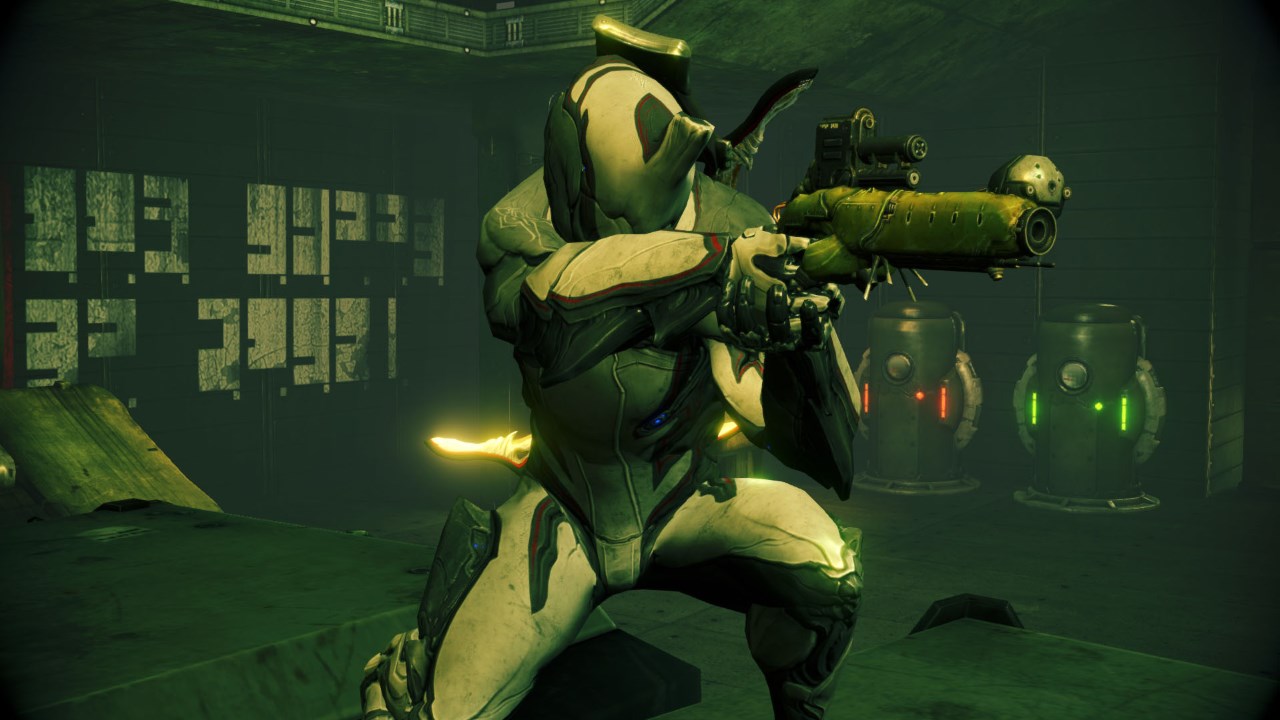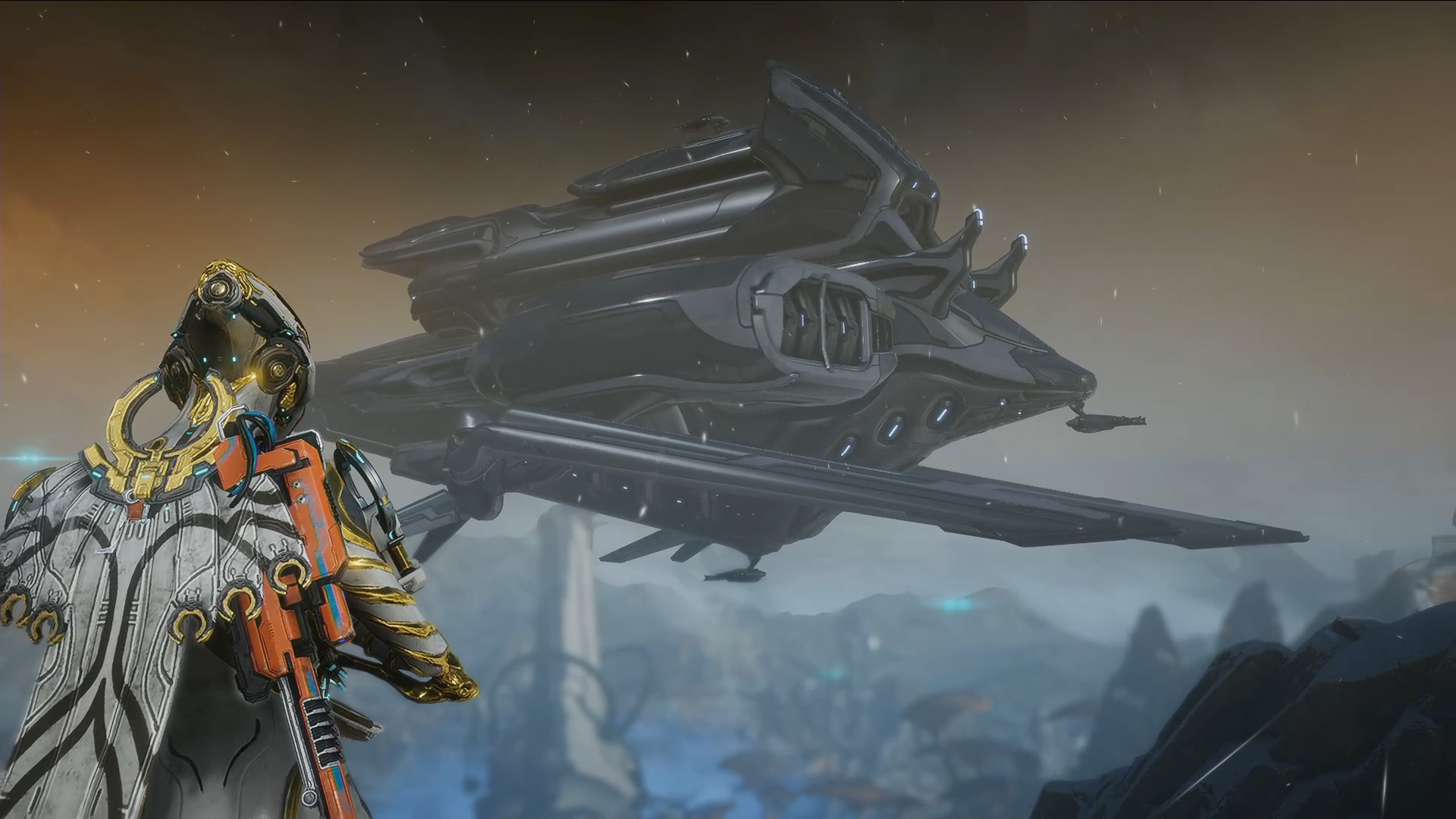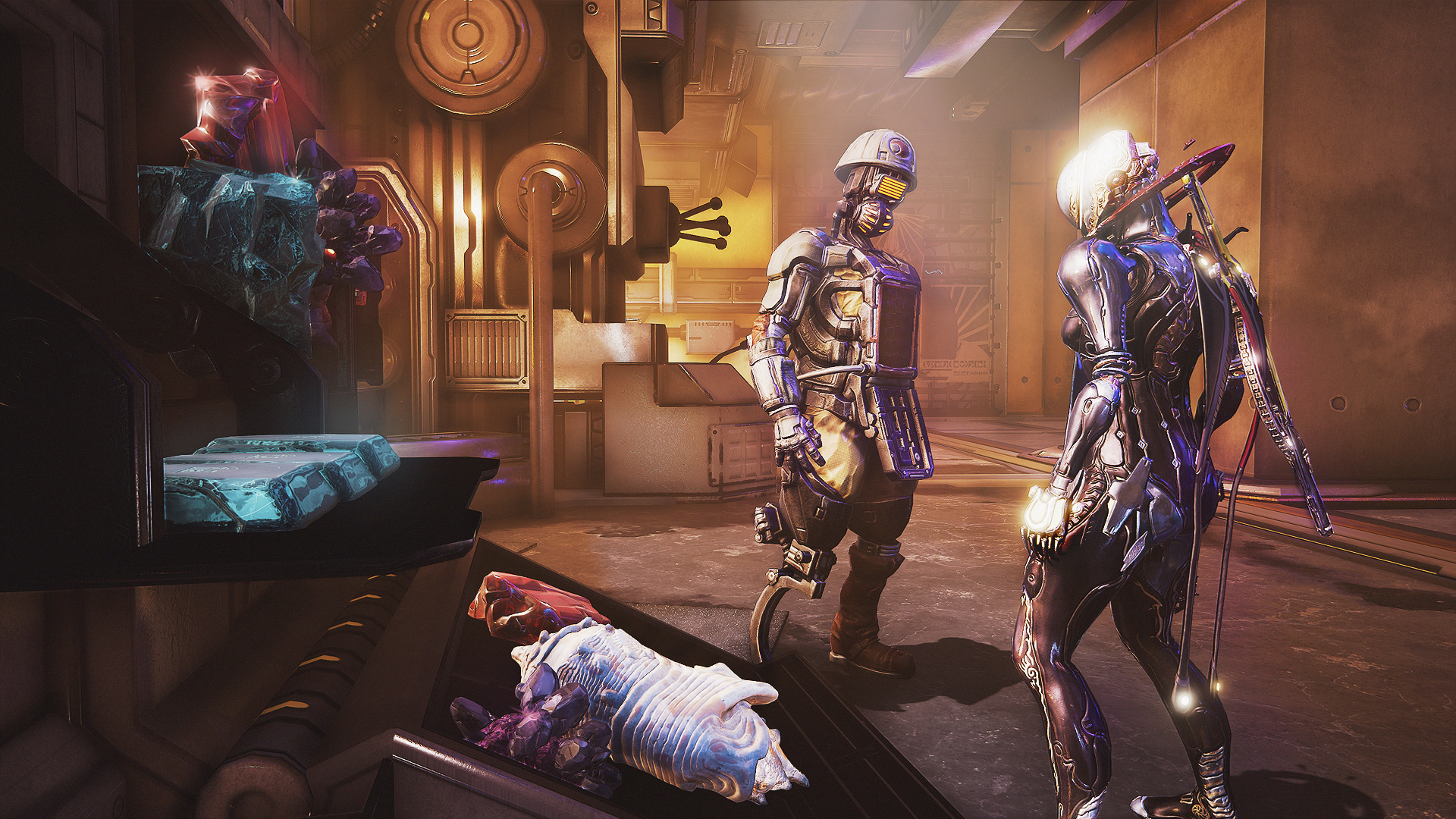Warframe's tough to start, but that's also why it's still so fun
We talked to Warframe's senior producer about new players, Dark Souls, and wikis

Start playing Warframe now - maybe you're still whistling that Fortuna musical number, or you have stars in your eyes from the dazzling space combat of Railjack - and you'll be escorted through a slick, cohesive series of tutorial missions. Then the main game begins… and it's confusing as hell. It's immediately clear that the tempting new expansions you're anticipating are only the latest in a five-year stream of updates, each with its own lasting legacy that must be unraveled partially on its own and partially in concert with everything else.

Warframe is a top contender in our list of the best free games - see what else made our ranking!
There are plentiful resources out there to help push you through the difficult early days into the rewarding mid and late-game, including our own Warframe mods guide. But why should players have to leave behind their ‘maybe robot, definitely ninja’ bodies to find their way to fun? This will sound counterintuitive, but the answer to that question is also the same reason Warframe is still drawing new players in five years after launch.
When developer Digital Extremes started working on Warframe in 2012 and 2013, keeping the whole project modular wasn't about futureproofing. It was about survival. The nascent Warframe team comprised only around eight people, with the rest of the studio finishing work on Star Trek (a side-story adaptation of the 2013 film, published by Namco Bandai Games). The team had a frighteningly brief window to prove the idea could work, but it couldn't create enough levels by hand to sustain player interest in what was essentially a last-ditch experiment.

"So our very first thing was like, ok, let's pretend the levels are PVC pipe," Senior Producer Dave Kudirka explains to me at TennoCon. "And if you have 30 pieces that means you have thousands of possibilities. [...] And we kind of leaned on that system until we could grow the game into something that was generating enough revenue to make more, but also enough to say that this is a game we can continue - let's make the next level!"
Since then, Digital Extremes has added new environments and factions with their own "tilesets" (an old video game term referring to all the pieces used to make up a map), as well as pre-built open-world areas like the Plains of Eidolon and the Fortuna expansion's upcoming Orb Vallis. At the base level, the procedural level generation system hasn't changed too much; it just has many more pieces of pipe to work with.
A similar idea guides the rest of Warframe. Digital Extremes has never made a clean break to fundamentally rework the game (that's why we're not playing Warframe 2 or 3 right now), instead opting to alter individual parts as new ideas come or old standbys fray. That's not to say the game hasn't changed substantially, it just may be the closest thing the games industry has to a Ship of Theseus.

"That's kind of the design philosophy that [we] go by. Don't lock us into something. Let us be able to expand it," Kudirka said. "Our original mod system was like, you pick nodes and trace a path to get to the thing you want. Once we opened that up to instead make it look more like a chemistry set where you're putting in different things and configuring it, then we were like, 'Oh yeah, that's totally scalable.' Every Warframe will have base stats that are different when you put that configuration on it. And then you switch out one mod and you've got a totally different setup for your character. We saw that early on as being a strong point and just latched onto it."
Sign up to the GamesRadar+ Newsletter
Weekly digests, tales from the communities you love, and more
What to do when there's too much of everything
Here's the problem with replacing parts of your ship and bolting new bits on instead of making a new one: you rarely get a moment to stand back and say, "This is how everything should fit together so that it makes sense from the outside, too." Over five years of updates, Warframe has built up a heap of marginally explained, semi-interacting systems. The core experience of leaping around and killing bad guys as a customizable space ninja has never been better, but so much is layered around it that many newcomers are daunted.
"If we give the veteran players something new and fresh to play that they're excited about, they bring a lot of new players in and help those players gain interest in our game."
I picked up Warframe when Digital Extremes invited GR+ to attend TennoCon 2018 (technically I was returning to the game, if you count an unimpressed half hour or so spent in the beta). I enjoyed the cinematic tutorial missions, but I felt uncomfortable as soon as the game kicked me out onto the broad star chart. Where am I going? What should I do next? Why does the game let me wander around this space station if barely any of it is relevant to me? Why is there so much stuff that I can't do yet and nothing telling me what I need to do first?
"As a new player you like a little bit of guidance," Kudirka said, admitting that Digital Extremes has had difficulty providing it. "The struggle for us is: do we put people on those systems, improving the early part of the game, or do we put our team on the later systems because we know the people that have joined us have stuck around, and they're looking for something new and fresh?
"For us, if we give the veteran players something new and fresh to play that they're excited about, they bring a lot of new players in and help those players gain interest in our game. And all of a sudden you have a community of players who are helping new players onboard and stuff. We're eternally thankful for our player base, and how welcoming they are to new players. So I think for that reason we might spend a fraction more time on the new stuff that will excite the players that have been with us for a while."
As soon as I got to TennoCon I was able to ask my more Warframe-seasoned peers (and yes, some of the developers themselves) about what I should focus on first. Turns out I should just keep working through new nodes of the map, ignore the weird space station bits for now, and try to unlock the heavy-hitting, damage-absorbing Rhino suit. Simple! But most players won't have the benefit of being submerged in a Warframe-wisdom-enriched environment for several days in order to figure out the game. They probably do have web browsers though.
Where does Warframe end and the community begin?
Fun fact: two Dark Souls games have come out since Warframe went live in 2013 (three if you count Bloodborne). Their influence on game design is self evident from Watch Dogs 2 to Hollow Knight, but another element beyond PvP invasions and punishing combat is just as important: the Souls games are deliberately opaque. Their understated lore and unexplained mechanics are meant for people to not just play through but figure out, and for players to share their findings far beyond the rudimentary forms of in-game communication. For many Souls players, fan-made wikis and other guides are required reading to get everything they want out of the game.
As far as I could tell from talking with Kudirka, Warframe doesn't intentionally obscure its inner workings from players in the same way a Souls game does. The confusing newcomer experience is an unintentional result of the game's piecemeal expansion. But the resulting community of players who come together to pool knowledge and welcome in newbies who weren't around for the discovery process is similar.

"It gives us a little bit of a comfort level to say, 'Gamers are smart, they'll figure it out, they have the resources available to them,'" he said. "As game developers we don't want players to go to the Wiki to figure out how to pass a level or do that kind of thing, or learn how to mod your weapons. But at the same time we're kind of comfortable that enough people have been coming through and figuring it out."
Digital Extremes doesn't want players to have to leave Warframe proper to figure anything out. You should always be able to work through things on your own, even if it's kinda rough going. But if wikis and guides are what players feel comfortable with, and it's readily available to everybody… Maybe that's part of the game, too?
"I think we're in an age now where people consume their media so much differently," Kudirka said. "Me and my wife watch Westworld on HBO. That's the type of show where you watch the episode and then you rush to the internet to see what the theories are, and what people think is gonna happen. I find comfort in that there's a lot more people that can play their game but can also jump back and forth between their community involvement and things that are outside the game, but they're still in that culture of Warframe on the message board or somewhere else. I take comfort in the fact that people can go outside of the game and come back, and we shouldn't feel bad that they had to go outside to learn something."
Find more to look forward to in our list of the new games of 2018.
I got a BA in journalism from Central Michigan University - though the best education I received there was from CM Life, its student-run newspaper. Long before that, I started pursuing my degree in video games by bugging my older brother to let me play Zelda on the Super Nintendo. I've previously been a news intern for GameSpot, a news writer for CVG, and now I'm a staff writer here at GamesRadar.



